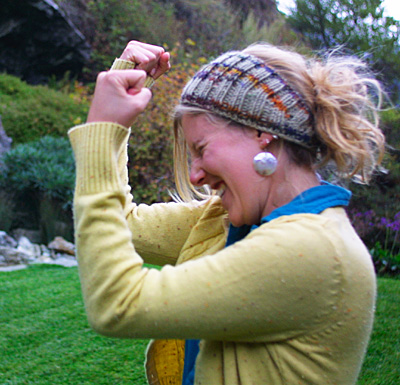
 CO
120 sts.
CO
120 sts.
Row 1: Work all sts in 2x2 Rib.
Row 2: Work in 2x2 Rib as set to
last 2 sts, turn work.
Row 3: Sl 1, work 3 sts, place
marker, work to last 2 sts, turn work.
Row 4: Sl 1, work 3 sts, place
second marker, work to next marker, turn work.
Row 5: Remove marker, sl 1, work
3 sts, replace marker, work to next marker,
turn work.
Repeat Row 5 fifteen times more.
Row 6: Do not remove marker. Sl
1, work to next marker, turn work. 44 sts
between markers; 38 sts at each side of piece,
outside of markers.
Row 7: Sl 1, work to marker, remove
marker, work 4 sts, replace marker, turn work.
Repeat Row 7 seventeen times more.
2 sts remain outside markers at each end of
the piece.
Row 8: Sl 1, work to marker, remove
marker, work last 2 sts.
Work 1 more row, removing final marker.
Loosely BO all sts.

